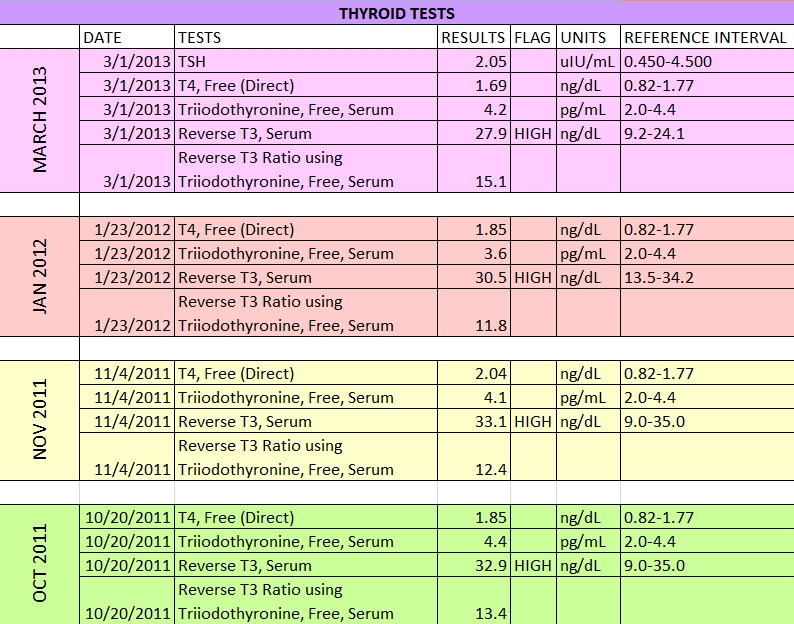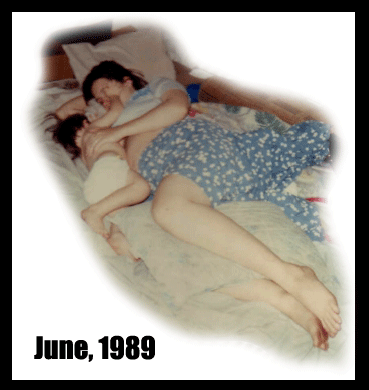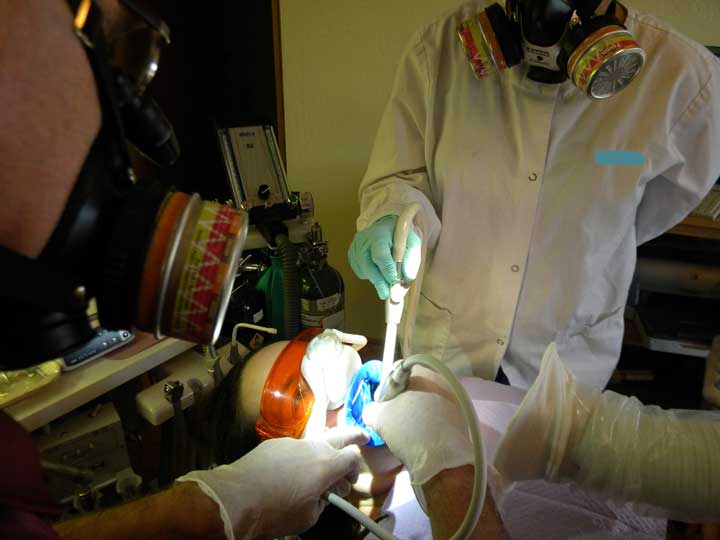I’ve been “baking my GAPS cake” for over three years now. Along the way I’ve tried some of the various “cherries” which Dr. Natasha Campbell-McBride has talked about.
Another cherry for me has been having my amalgams removed. I have felt for a while that the mercury has been hindering my progress to move forward in my quest for more energy and I have wished to be able to get the fillings replaced for a few years now. Finally I was able to do that, and I am so grateful and feel so blessed for the chance to have them removed. I almost feel a little guilty because I have been able to do this while others have not. I hope one day to be able to fulfill my dream to create a non-profit organization that will allow me to help people have their amalgams removed safely, get blood tests done for various conditions, for example I really feel like the MTHFR genetic mutation plays a huge part in health. I believe one day it will be a very small piece to my health puzzle, but at the moment I think it is something that needs to be taken into consideration and addressed to the best of my ability.
So after the first amalgam removal by my holistic dentist I felt better. That night I slept more peacefully than I have in a while, and woke up without that constant feeling of stress and anxiety. I felt so much better that I was actually looking forward to getting the last six removed.
Unfortunately during the second amalgam removal I began to feel anxious. Along with other symptoms, the anxiety continued and grew worse. One of the symptoms which worried me the most was my inability to focus and my lack of desire to do anything – which was growing worse by the day. One of my friends pointed out that maybe I’m just burned out and need a break. Well, that could be, but this was different.
I had been eating a few too many carbohydrates again, so I reined in my consumption but I continued to feel poorly. I didn’t want to work on our income taxes (although the 15th was just days away – I ended up filing an extension), I didn’t want to pay bills or manage our finances, I didn’t feel like being on the computer. At work, I felt like I could care less about completing my tasks. They are never ending and always there, I can’t seem to ever get caught up so why bother.
A very dangerous attitude for the person who does the company billing. No bills go out, no money comes in. No good. Very bad.
I started to read Amalgam Illness by Andrew Cutler and also joined a list which discusses chelating protocols and I started to learn that it is fairly common to feel worse after removal, even when done safely and correctly. I also learned that the thyroid and adrenals are further stressed (which makes sense). I’ve got my adrenals covered. I did consider that maybe I needed to increase my adrenal support but the fact of the matter remains that I have hypothyroid symptoms which I’ve had for decades. The adrenals and thyroid work together as a team (along with other bodily systems). One team member (thyroid) has been sitting on the sidelines for too long. I realized the symptoms I was experiencing can be attributed to mercury poisoning, but also to low thyroid function. It apparently goes without saying that I have some degree of mercury poisoning since I’ve had amalgams for 34 years (my first two were installed when I was 16). But it appears that the removal kicked my thyroid down a notch.
On Tuesday, April 17th, I felt so miserable I just impulsively decided I was going for it. I’d had a particularly bad night and depressed weekend, so I opened that bottle. I have had the prescription from my naturopathic physician since December 2011.
When I say impulsive, I don’t mean that I just started willy-nilly. I did recently have blood work done, and I specifically tested for the things I know to be important components to tolerating T3. One is that iron levels must be at a certain point, and one’s adrenals must be supported. I’ve got my adrenals covered, and here are my iron results. According to (this is an Amazon affiliate link) Stop the Thyroid Madness: a Patient Revolution Against Decades of Inferior Treatment my iron levels are good for tolerating the thyroid medication.

My thyroid numbers come back within range, but I have the reverse T3 problem. The ratio between the reverse T3 number and Free T3 should be at least 20 to feel well. Mine has been as low as 12 and recently my tests came back showing I was at 15. Better, but still low. You can see in the image below how my tests have been for the past 18 months. Everything within the range, except my reverse T3 is high every time.
Dr. Jack Kruse says the Leptin Reset should fix reverse T3 but it didn’t cure my reverse T3 problem. Reverse T3 can be caused by a number of problems, one of those being stress and I have my fair share of that. Not to mention low thyroid function can be a source of stress. I have considered trying the T3 only protocol to address my reverse T3 problem but had been extremely resistant to moving forward.

In spite of the fact that I was sleep deprived I felt better within hours of taking my first very tiny dose. Each successive day I have felt better. The haunting depression is gone. The anxiety is gone. My poor husband, I have been such a basket case lately!! My sleep seems to be getting better – on the night of the fourth day, I slept through the night without waking up once. Okay, granted I got to sleep around midnight but I was stunned when I woke up to find that it was 5:30. I have not slept that many hours without waking at least once to pee in I don’t know how long. I hope I have more nights like that.
There’s one more thing that may have helped tip me over the edge toward thinking maybe it would be okay for me to support my thyroid. I am extremely opposed to taking medication and maybe I’ll explore that in another post. I was reading an older book on thyroid care. I am not sure if someone gave it to me, or if I picked it up from a thrift store. My apologies if you sent it to me. The book is called (this is an Amazon affiliate link)The Thyroid Solution: A Mind-Body Program for Beating Depression and Regaining Your Emotional and Phys ical Health and it is written by Dr. Ridha Arem. This passage stuck in my mind:
Biopsychiatrists often say that the first drugs shown to alleviate depression by altering brain chemistry were lithium and imipramine, the first tricyclic antidepressant. (Developed in the mid-1950s, tricyclics were hailed for being able to “normalize” mood without causing euphoria.) In a way, however, thyroid hormone pills are one of the oldest medications known to treat depression.
In 1890, Spanish doctors implanted a sheep’s thyroid gland beneath the skin of a thirty-six year old woman suffering from severe hypothyroidism. They noted an immediate improvement in her symptoms and appearance. This experiment inspired Dr. George Murray to extract a fluid from sheep thyroid glands the following year. He achieved spectacular results by injecting this fluid into a severely hypothyroid patient.
The discovery that extracts of animal thyroid could reverse the physical and mental effects of an underactive thyroid was the first major breakthrough in the history of thyroid disease. Patients who had been institutionalized due to extreme symptoms, such as a form of madness from severe hypothyroidism, regained their sanity when they took the extracts. Suddenly, underactive thyroid – once a fatal condition – became controllable, allowing afflicted people to live normal lives.
First Edition, June 1999. Chapter 6, page 105.
People were actually institutionalized in the past – because they had severe hypothyroidism. Wow.
I guess in reading Dr. Hal Huggins book I had hoped my thyroid would just miraculously kick in and begin working wonderfully… maybe for some, but apparently not for me. That’s okay, I’m going to figure this out eventually.
Next on my cherries list: chelation. I am planning to begin Andrew Cutler’s protocol on Friday the 26th. Interestingly, I feel no internal resistance to this protocol. And it is actually one of the reasons I decided to begin the thyroid medication because I did not feel that I would be able to tolerate it without thyroid support.
It is my hope that once I go through chelation (which could take 6 months to 2 years or longer), I will be able to wean myself off both thyroid medication and adrenal support. I’m pretty sure it will happen, but time will tell.
For more information on the topics I’ve mentioned in this post, please visit these links:
- (This is an Amazon affiliate link)Stop the Thyroid Madness: a Patient Revolution Against Decades of Inferior Treatment
- Andrew Cutler’s Official Site for Amalgam Illness Diagnosis and Treatment
- Stop the Thyroid Madness Iron
- Reverse T3 and Thyroid Resistance
- Stop the Thyroid Madness Reverse T3
- Loving Our Guts MTHFR part 1 and MTHFR part 2
- Stop the Thyroid Madness MTHFR
- Dr. Ben Lynch MTHFR
- Sterling Hill’s MTHFR Support
- This is my Amazon affiliate link for the more recent version (2008) of The Thyroid Solution: A Revolutionary Mind-Body Program for Regaining Your Emotional and Physical Health by Dr. Ridha Arem.
My previous posts:
- What is a reverse T3 problem?
- How to Treat a reverse T3 problem
- MTHFR and Down Syndrome
- Symptoms of Low Thyroid that I Experience
- Heal Your Adrenals and Thyroid with Cold Thermogenesis?
- GAPS and Healing Autoimmune Thyroid Autoimmune Disease Hashimoto’s
- Ordering Laboratory Tests on Your Own
- Book Review: Wilson’s Temperature Syndrome










